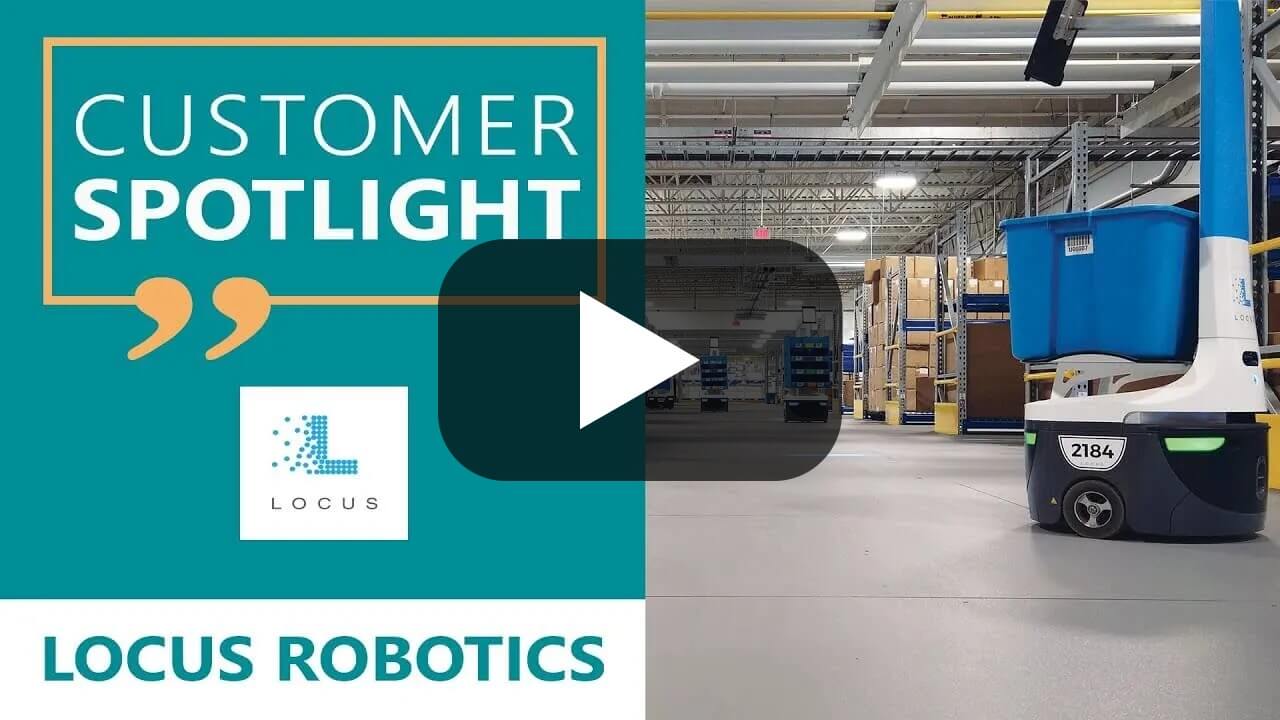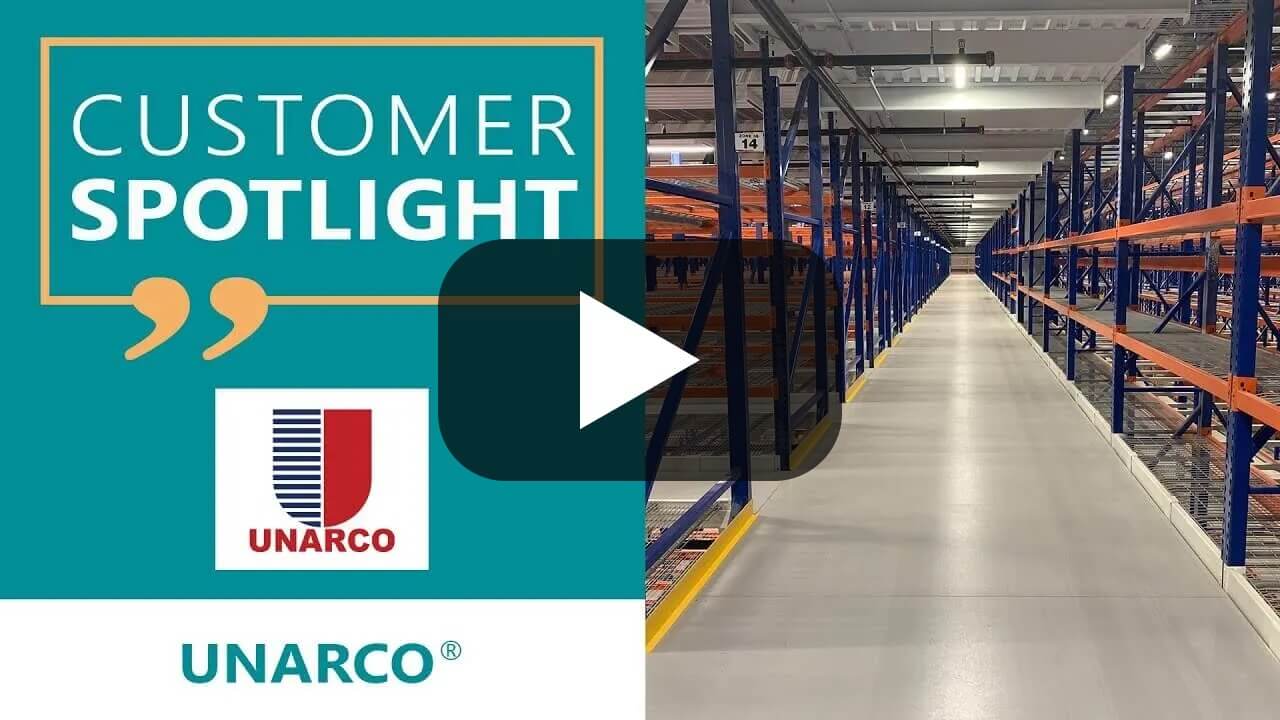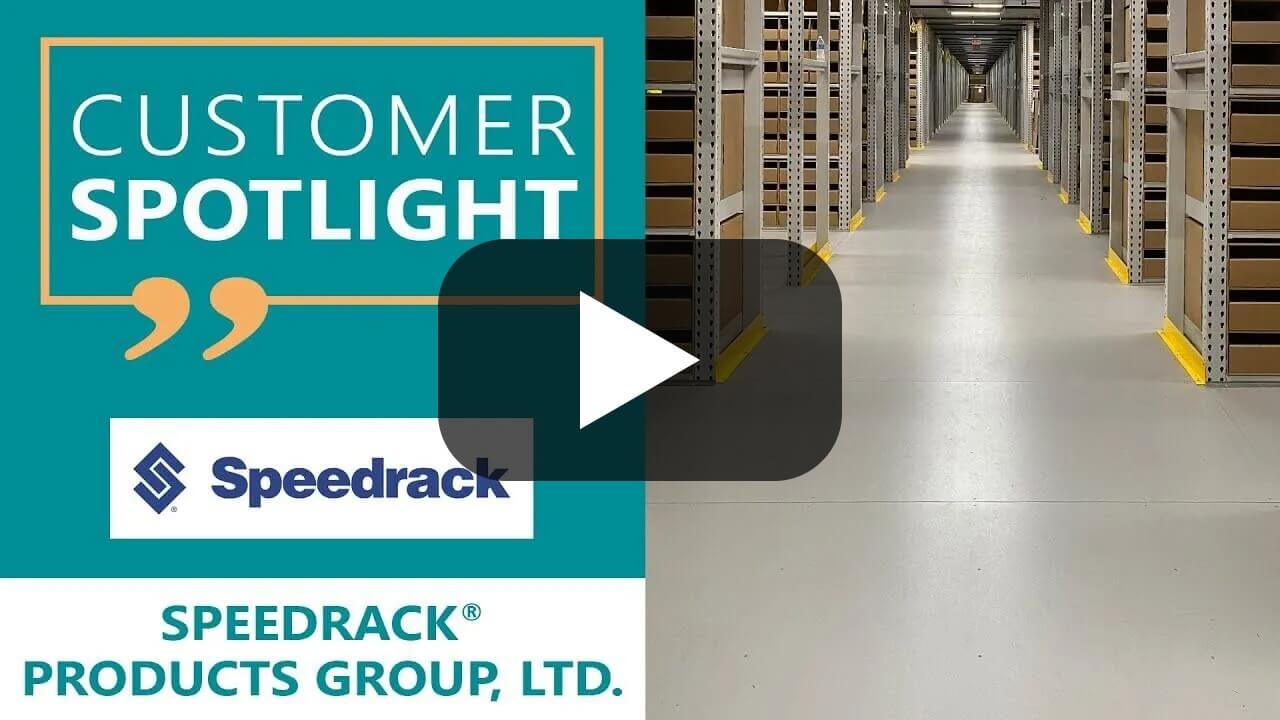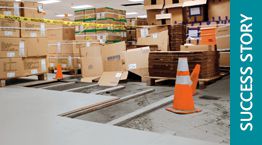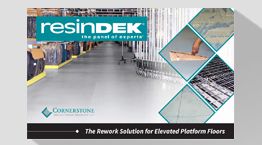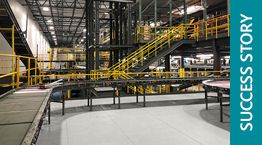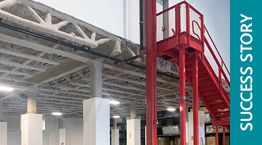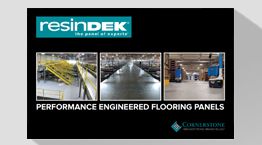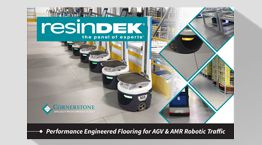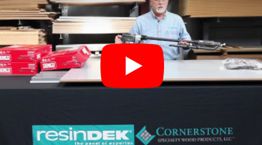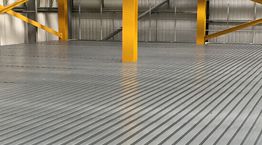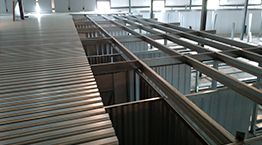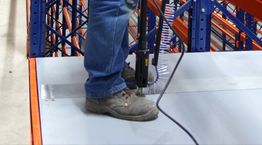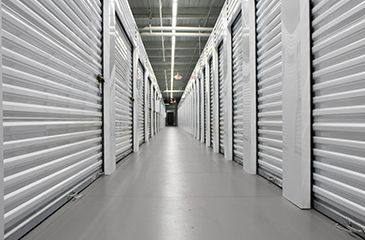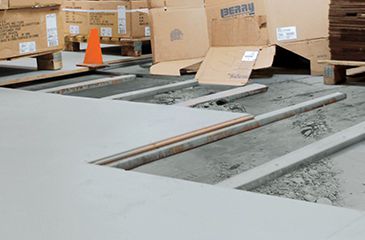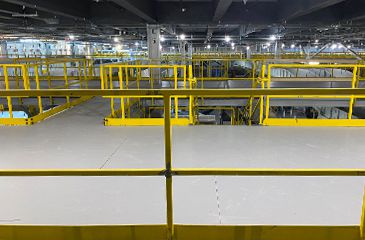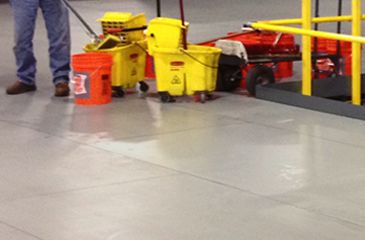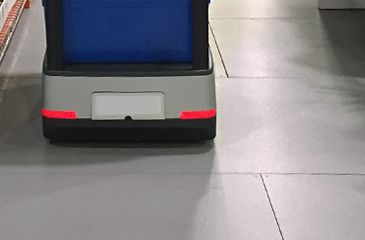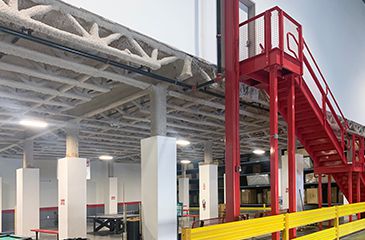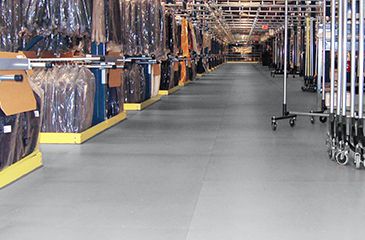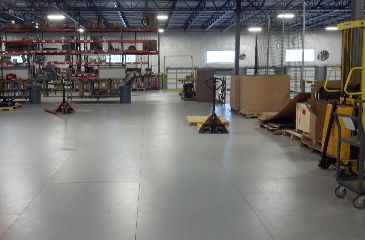
Warehouse Robots: Why Your Flooring Choice Matters
JUN 08 2021 | ROBOTICS AGVS & AMRS
Throughput is everything.In today's fast-paced warehouse environment, robots need to move quickly and efficiently. This speed and efficiency are critical for maintaining uptime and achieving your daily operational goals. Warehouse robots, including Autonomous Mobile Robots (AMRs) and Automated Guided Vehicles (AGVs), are revolutionizing warehouse operations, offering significant improvements in speed and accuracy. However, to maximize the benefits of these robotic systems, it's crucial to consider a factor that's often overlooked: the flooring.
The Impact of Flooring on AMR and AGV Performance
While AMRs and AGVs represent different generations of robotic technology, they share a common requirement: optimal flooring.
- Autonomous Mobile Robots (AMRs): These advanced robots navigate using sophisticated mapping software and onboard sensors, allowing them to dynamically avoid obstacles and adapt to changing environments.
- Automated Guided Vehicles (AGVs): AGVs, a more established technology, follow predetermined paths using guides like wires, magnetic strips, or fudicials.
Regardless of the specific type, the performance of both AMRs and AGVs is directly affected by the floor surface. A subpar floor can lead to:
- Reduced Speed and Efficiency: Uneven or damaged flooring can impede robot movement, slowing them down and reducing overall throughput.
- Navigation Errors: Inconsistent surfaces can interfere with a robot's sensors or guidance systems, causing them to deviate from their intended paths.
- Increased Downtime: Floor-related issues can lead to robot malfunctions, requiring repairs and halting operations.
- Safety Concerns: Poor flooring can increase the risk of robots tipping or colliding with obstacles, potentially damaging goods or creating hazards for personnel.
- Accelerated Wear and Tear: Abrasive or unsuitable flooring can cause excessive wear on robot wheels and components, leading to more frequent maintenance and replacements.
How Warehouse Robots Drive Operational Efficiency
The adoption of warehouse robotics is exploding. Industry forecasts predict massive growth in robotics revenue, driven by the tangible benefits these machines offer:- Increased Speed: Robots can move materials, pick orders, and complete tasks far faster than humans.
- Improved Accuracy: Robots minimize errors in tasks like picking, inventory management, and data capture.
- Enhanced Safety: Robots can handle dangerous or physically demanding tasks, reducing the risk of workplace injuries.
- Continuous Operation: Robots can work around the clock without breaks, maximizing productivity.
- Optimized Labor Allocation: By automating repetitive tasks, robots free up human employees to focus on higher-value work requiring critical thinking and problem-solving.
Industry 4.0 and the Rise of Warehouse Robotics
The integration of robotics is a cornerstone of "Industry 4.0," the current industrial revolution characterized by automation, data exchange, and interconnected systems. Robots play a vital role in creating "smart factories" and distribution centers, enabling:
- Greater Agility: Robots can quickly adapt to changing demands and product flows.
- Improved Data Collection: Robots can gather real-time data on inventory, operations, and performance.
- Enhanced Connectivity: Robots can communicate with other systems and devices, creating a seamless flow of information.
ResinDek® Flooring: Engineered for Robotic Performance
Choosing the right flooring is not just about supporting the weight of the robots; it's about creating an environment where they can thrive. ResinDek® mezzanine flooring from Cornerstone Specialty Wood Products is specifically designed to meet the demanding requirements of warehouse robotics.
Six Critical Flooring Factors for Robotic Operations:
- Capacity: The floor must be able to withstand the combined weight of the robot and its payload. ResinDek panels are engineered to support heavy dynamic and static loads.
- Friction: The floor surface must provide the right level of grip for robot wheels, ensuring smooth and consistent movement, even when dirt and debris are present.
- Roughness: A smooth, consistent surface minimizes vibrations and ensures optimal contact between the robot's wheels and the floor.
- Flatness: Levelness is paramount. Uneven floors, a common problem with traditional concrete, can cause robots to go off course, leading to costly downtime. ResinDek flooring provides a consistently level surface.
- Gloss: For robots that use downward-facing sensors, the floor's reflectivity must be considered. ResinDek's coatings can be customized to minimize glare and ensure accurate sensor readings.
- Wear Resistance: Automated robotic systems generate substantially higher traffic volumes than conventional warehouse equipment. ResinDek flooring offers three specialized finishes engineered specifically for various robotic applications, ensuring optimal performance and longevity under intense operational demands.
The ResinDek® Advantage
ResinDek offers three specialized robot-ready finishes: TriGard® ESD for lidar-navigated robots with variable paths; TriGard® ESD Ultra, which delivers 4X greater durability for high-traffic, defined routes (customizable for surface texture and reflectivity); and MetaGard® SST, featuring steel-encapsulated panels that endure millions of cycles in 24/7 environments where dirt and debris accumulate.
While all ResinDek robotic finishes provide electrostatic dissipative properties, their primary benefit is exceptional durability and consistency. ResinDek flooring panels ensure long-lasting performance and minimize the need for frequent repairs or replacements, ultimately reducing operational costs.
Conclusion:
As businesses increasingly rely on warehouse robots to optimize operations, the choice of flooring becomes a critical factor for success. ResinDek mezzanine flooring offers a proven solution, providing the durability, consistency, and performance needed to maximize the efficiency and longevity of your robotic workforce. Contact Cornerstone Specialty Wood Products today to learn more.
ADDITIONAL BLOG POSTS
MAY
1
2025
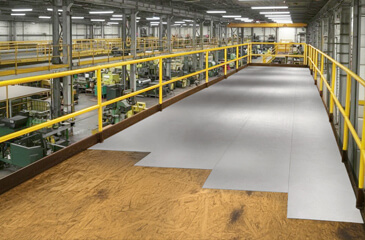
MATERIAL HANDLING, ROBOTICS
Upgrade Your Mezzanine Flooring While Avoiding Timely and Costly Replacement
DEC
5
2023
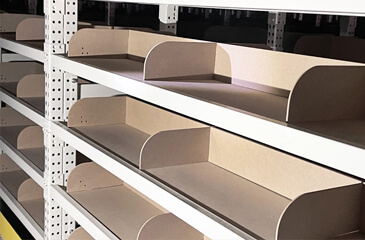
MATERIAL HANDLING, SHELVING
Comparing Shelving Systems for Industrial Pallet Racks: How to Pick the Best Solution
APR
25
2023
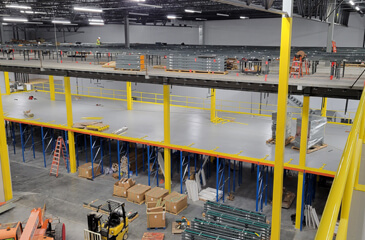
MATERIAL HANDLING, ROBOTICS, SELF-STORAGE
Warehouse Expansion: What To Consider When It's Time to Expand
AUG
23
2022

MATERIAL HANDLING, ROBOTICS, SELF-STORAGE
ResinDek Products Receive Renewed SCS Certification of Environmental Sustainability
JUL
7
2022
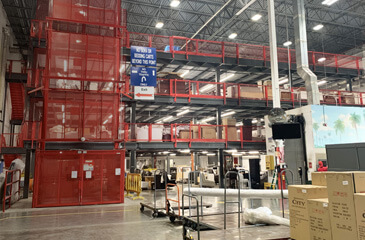
MATERIAL HANDLING, ROBOTICS, SELF-STORAGE
Key Flooring Considerations When Updating an Existing Industrial Mezzanine System
MAR
1
2022
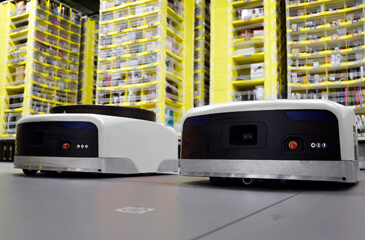
ROBOTICS AGVs AND AMRs
6 Ways Engineered Mezzanine Flooring Maximizes Implementation Success
SEP
14
2021
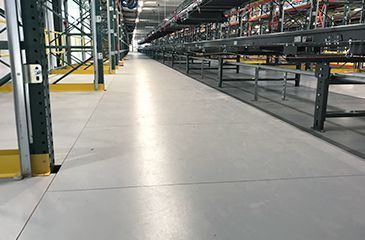
MATERIAL HANDLING, ROBOTICS, SELF-STORAGE
Three Reasons Why Your Industrial Mezzanine Floors Should Have IAPMO Validation
AUG
31
2021
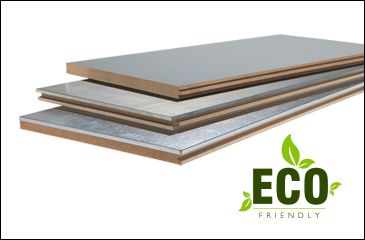
MATERIAL HANDLING, ROBOTICS, SELF-STORAGE
How Warehouse Mezzanine Flooring Earns Credits for LEED® Certification
JUN
29
2021
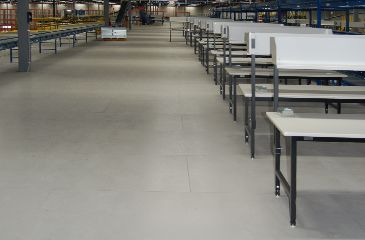
MATERIAL HANDLING, ROBOTICS, SELF-STORAGE
Mezzanine Floors: Strong, Sustainable, Speedy, Safe, Spacious
JAN
24
2021
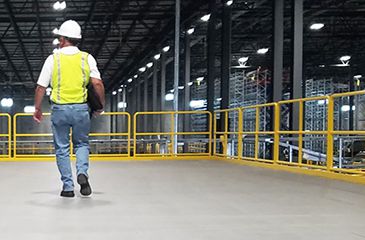
MATERIAL HANDLING, ROBOTICS, SELF-STORAGE
Study Finds ResinDek® Flooring 34% More Cost Effective Than Concrete
MAY
31
2019
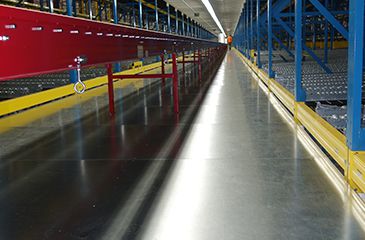
MATERIAL HANDLING, ROBOTICS, SELF-STORAGE
New ResinDek with MetaGard® Finish: Our Strongest Surface Option Yet
MAY
21
2018
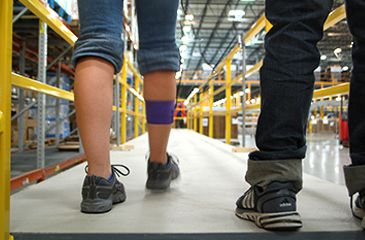
MATERIAL HANDLING, ROBOTICS, SELF-STORAGE
The Ergonomic Dangers of Concrete Flooring (And How ResinDek® Floors Can Help)
